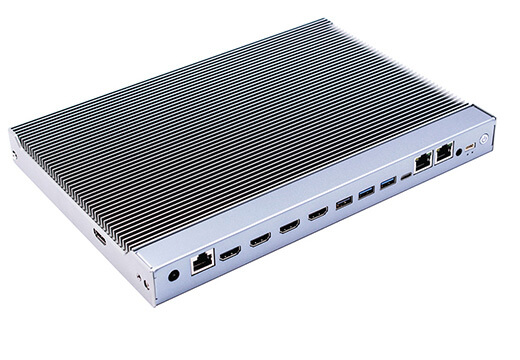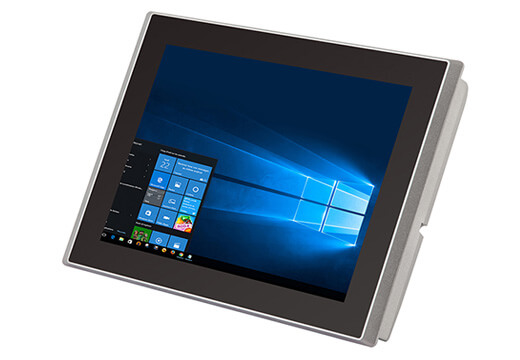Is Your Industrial PC Causing Project Headaches?
"The software team is always complaining that our industrial PCs have poor real-time performance. What am I doing wrong?"
A friend in industrial procurement shared this frustration with me recently, and it's a story we hear all the time. If you work in industrial automation, robotics, or with PLCs and PACs, you know that real-time performance isn't just a feature—it's a mandatory requirement.
Let's break down how you can scientifically evaluate the real-time capability of an industrial PC (IPC) so you can make confident purchasing decisions and keep your projects on track.
The High Cost of Poor Real-Time Performance
In many industries, a delay of even a few microseconds can have disastrous consequences. An IPC that fails to meet real-time standards can lead to:
For Industrial Robots: Excessive latency () can cause motion trajectory deviations, ruining precision and potentially damaging expensive equipment.
For PLC/PAC Control: A slow I/O response creates a lag in logic execution, hurting production line efficiency and throughput.
For Industrial Buses (EtherCAT/Profinet): High latency (jitter) breaks the precise data synchronization between devices, compromising the entire system's stability and performance.
If your chosen IPC isn't up to the task, you're not just facing complaints from the software team; you're risking production quality, project deadlines, and your company's bottom line.
The Ultimate Litmus Test: How to Verify Real-Time Performance
Don't just trust the spec sheet. The most reliable way to measure real-time performance is to test it yourself. On Linux systems, the industry-standard tool for this is cyclictest.
Simple Testing Steps:
Request a Demo Unit: Before any bulk purchase, always get a sample from the supplier for evaluation. This is a non-negotiable step.
Run the
cyclictestCommand: Open the Linux terminal and run the following command. This simulates a high-priority, real-time workload.Bashcyclictest -p 99 -i 250 -m -a 1 -NPerform a Stability Test: Have an engineer run the test for an extended period (a 24-hour or even a 7x24-hour stability test is best) to simulate a demanding industrial environment.
Analyze the
MaxLatency: Once the test is complete, look for theMaxvalue in the results. This number, measured in microseconds (), is your single most important metric.
How to Decode the Results:
The Max value represents the worst-case latency recorded. A lower number is always better.
Excellent (< 50µs): Ideal for high-precision applications like CNC machining, semiconductor equipment, and demanding motion control.
Good (50µs - 100µs): Acceptable for many general industrial automation and robotics tasks.
Caution (100µs - 200µs): May be suitable for less demanding tasks but could struggle with high-speed synchronization.
Poor (> 200µs): Unlikely to meet the requirements for most modern real-time control applications.
Note: Some cyclictest versions output in nanoseconds (ns). If you see a result like Max: 17142, that is 17.142 µs—an excellent score!
Your Ultimate Industrial PC Buyer's Checklist
Beyond testing, here are the key factors to consider when selecting your next IPC.
1. Hardware Architecture & OS
Platform:
ARM/ARM+FPGA: Often provides excellent real-time performance out-of-the-box with low power consumption.
x86 (Intel/AMD): Delivers powerful raw performance but typically requires specific BIOS/OS optimization to achieve low latency.
Operating System:
Linux with a real-time patch (RT-PREEMPT): A powerful, cost-effective, and widely supported open-source choice.
Commercial RTOS (VxWorks, Green Hills): Offer premium, guaranteed real-time performance but come with significant licensing costs.
2. Supplier Vetting
Real-Time Expertise: Does the supplier understand real-time performance? Ask them if they offer BIOS optimization or pre-configured real-time operating systems.
Protocol Support: Can they provide verified support for EtherCAT Master or Profinet stacks? This proves their hardware is suited for demanding network control.
Proven Track Record: Ask for case studies or references from customers in your industry (e.g., motion control, machine vision).
Stop Guessing, Start Testing
When purchasing an industrial PC, you can't judge its suitability on price and core specs alone. Real-time performance is a critical indicator that must be scientifically verified. Using a professional tool like cyclictest empowers you to cut through marketing claims and select a device that truly meets your technical requirements, preventing costly compatibility issues down the line.
If you're looking for an industrial PC engineered for superior real-time performance, consider Vstrongtech. We specialize in hardware and BIOS optimization for demanding applications. Whether you need a Fanless Mini PC for a robot controller, a DIN-RAIL mounting Mini PC for a control cabinet, or a rugged Fanless Box PC to run an EtherCAT Master, our systems are built and pre-tested to deliver the low-latency performance you need.
 Boost Your Workflow with 4-HDMI Industrial Mini PCs – Built for Multi-Display Power
Boost Your Workflow with 4-HDMI Industrial Mini PCs – Built for Multi-Display Power
 How to Choose the Right Industrial Touch Screen Panel PC for Your Environment
How to Choose the Right Industrial Touch Screen Panel PC for Your Environment

